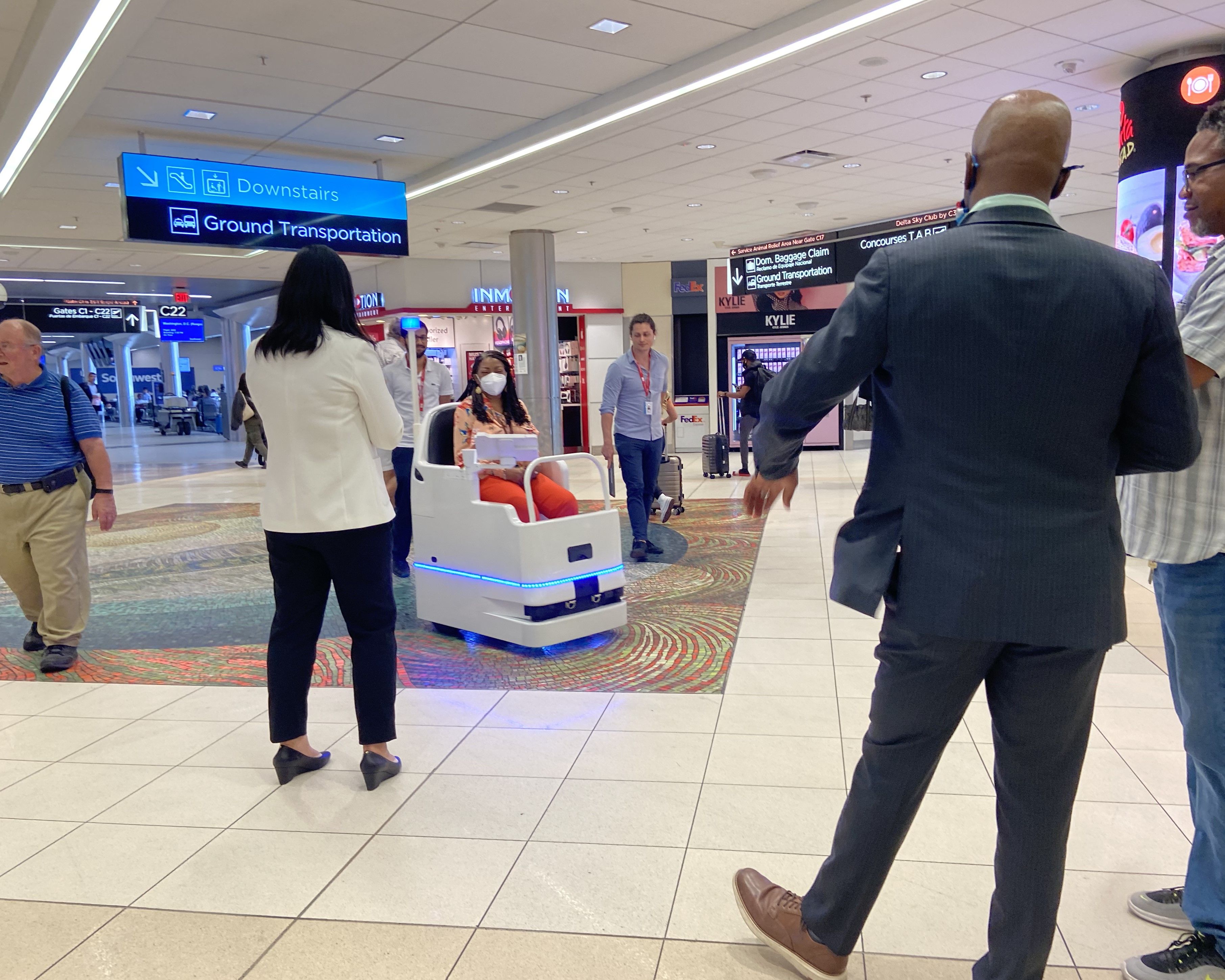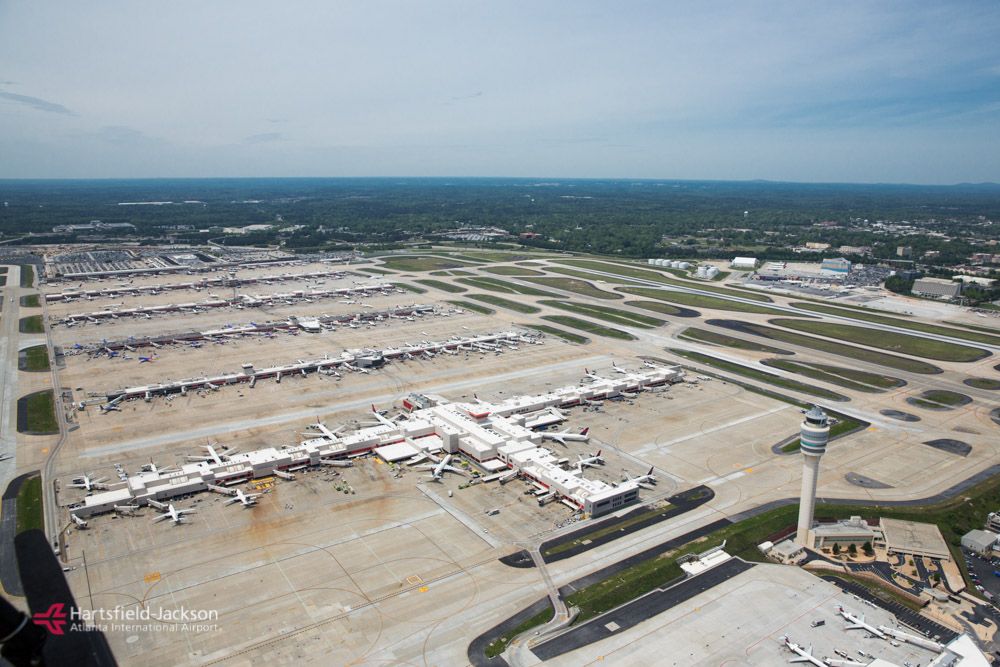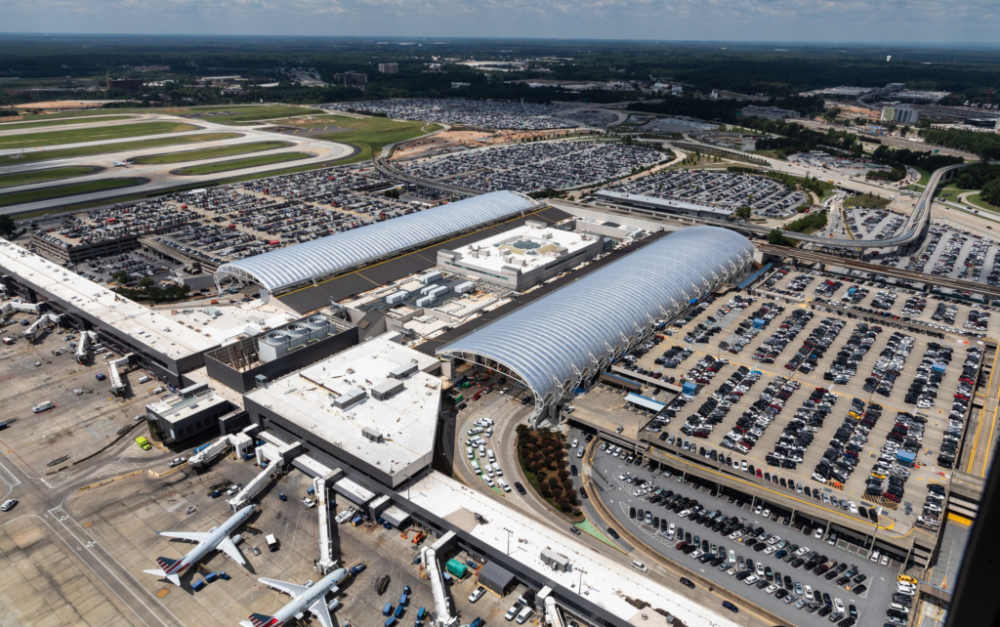Long walks to distant boarding gates through overcrowded airports can be daunting. It's often impossible for people with reduced mobility, so they rely on airport staff to get them there, either in wheelchairs or shuttle buggies.
Last month, Hartsfield-Jackson Atlanta International Airport (ATL) passengers might have caught a glimpse into the future. Along with the airport and Southwest Airlines, Canadian autonomous micro-mobility company A&K Robotics (A&K) trialed its self-driving pod at Concourse C's departure level. With more than 100 million passengers moving through the airport annually (pre-COVID), it seems like a logical place to demonstrate what the technology can do in crowded areas.
Founded in 2015, Vancouver-based A&K specializes in advanced navigation systems. Its intelligent navigation technology does not need any external infrastructure and can find its way around moving objects. A&K claims its autonomous electric pods are the first in the industry to safely navigate through crowded places, such as airports, while avoiding people and obstacles.
Hailing an autonomous pod at the airport
According to The Atlanta Journal-Constitution, the pods are programmed to operate at a moderate walking pace and have sensors to adjust speed when approaching objects or people to stop, slow down or drive around them. A&K says that passengers who need assistance will be able to hail the self-driving pods using a mobile app.
The Atlanta trial used the pods to give people with reduced mobility (PRM) an introduction to how the technology can help them independently move around, get to the gate or visit airport service outlets and other amenities. Improving the airport experience for PRM is increasingly an issue for the airport and the airline they are traveling with. Southwest Airlines operates flights from Concourse C and collaborated with the month-long project.
Requests for internal transport at airports usually come from passengers who can walk short distances but struggle on longer ones. It could be due to various factors, be it age, medical, exhaustion, or simply needing help on a tough day. Jessica Yip is A&K chief operating officer and said, "To see our innovation being considered by Atlanta Airport to enhance the travel experience of passengers with limited mobility is exhilarating. We are looking forward to collaborating with the airport authority and the Southwest team to bring the best experience possible for the PRMs."
Find more aviation news here!
Will ATL take the plunge?
ATL chief commercial officer Jai Ferrell said the airport was looking for advanced mobile robotics solutions to improve its operations. Ferrell believes that A&K has the most advanced autonomous micro-mobility solution for PRM assistance. He added, "This is the first time we are testing robots at the departure level, and the results are very impressive."
"We are looking forward to expanding the tests and possibly adding A&K's pods to our existing PRM operations, making it easier for our passengers to navigate the airport."
In December 2019, Etihad Airways (Etihad) launched a trial of autonomous wheelchairs at Abu Dhabi International Airport (AUH). The trial involved Etihad, the airport, IT company SITA and WHILL, a supplier of personal electric vehicles. Rather than relying on an airport porter to bring a wheelchair, passengers could use the autonomous WHILL vehicle.
Once the departure details are entered, the autonomous wheelchair sets off for the gate, using its sensor technology to avoid obstacles. On arrival at the departure gate, the passenger alights, pushes a 'return' button and the wheelchair heads back to the charging station. While the trial was declared an outstanding success, it appears COVID has gotten in the way of implementation.
Source: Atlanta Journal




.jpeg)